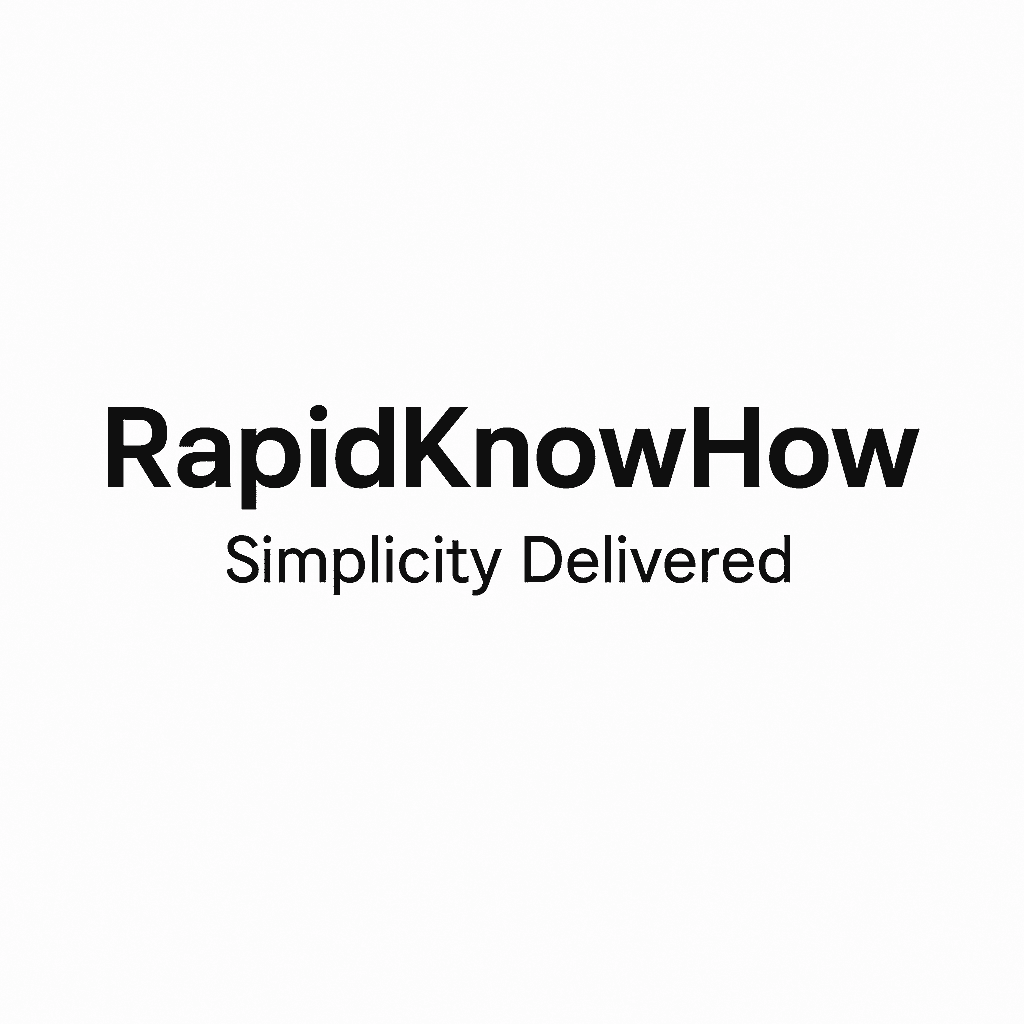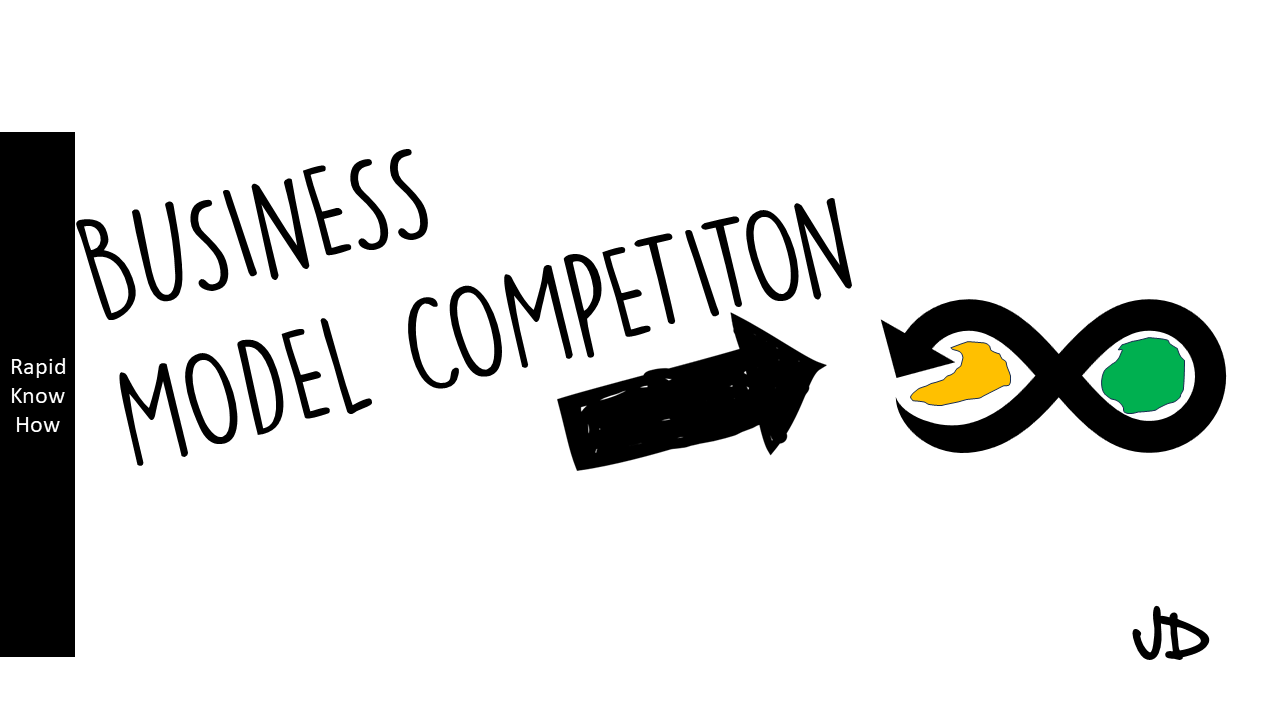⚡ RapidKnowHow in 1 Minute
Click a case, run the 6-step flow, and move from Problem → Result fast. Built for WordPress Custom HTML blocks. No libraries, no tracking.
⚡ RapidKnowHow in 1-Minute – Glossary
This glossary defines the core terms used in the RapidKnowHow 1-Minute System to ensure fast understanding and consistent use across business, strategy, and leadership contexts.
Core Terms
- 1-Minute System
- A method to move from problem → solution in under one minute of structured thinking using six clear steps.
- 6-Step Process
- The foundation of RapidKnowHow: Problem → Observe → Root Causes → 80/20 Lever → Action Plan → Result.
- Problem
- The starting point—identify the single most urgent challenge or obstacle preventing progress.
- Observe
- Map the situation objectively. Go see what’s happening. Gather facts, not opinions.
- Root Causes
- Identify underlying reasons for the issue using the “5 Whys” method to avoid surface fixes.
- 80/20 Lever
- Focus on the 20% of actions that create 80% of results. The key leverage point to shift outcomes rapidly.
- Action Plan
- Convert insight into clear steps, responsibilities, and timing. Keep it executable within days.
- Result
- Visible, measurable improvement achieved through decisive action. The validation of your learning cycle.
Strategic Categories
- Business Case
- A structured example demonstrating how the RapidKnowHow process is applied in an organization to resolve operational or strategic problems.
- Strategy
- Aligning long-term direction with decisive actions. The use of the 1-Minute Tool ensures clarity before planning execution.
- Operations
- Improving daily business performance by identifying inefficiencies and applying the 6-Step Process to remove friction quickly.
- Marketing
- Creating clarity in brand, communication, and conversion. Each case shows the link between insight and measurable result.
- Sales
- Turning pipeline bottlenecks into growth opportunities by using 1-Minute diagnosis and actionable levers.
Methodology Concepts
- RapidKnowHow
- The overall system combining speed, simplicity, and structure to achieve sustainable results using AI-supported insight tools.
- 1-Minute Insight
- A fast, visual, structured reflection turning a complex issue into a solvable step sequence.
- Go-See (Genchi Genbutsu)
- Direct observation of the real process or situation to understand facts first-hand, borrowed from lean thinking.
- 5 Whys
- A simple but powerful root cause analysis tool—ask “why?” five times until the fundamental cause appears.
- 80/20 Principle (Pareto)
- Named after economist Vilfredo Pareto; the concept that 80% of outcomes result from 20% of causes. Used to prioritize impact actions.
- Action Leverage
- The process of selecting the smallest, highest-impact change that can unlock the biggest result.
- Rapid Result
- A measurable output achieved within a short timeframe (typically days to weeks) after applying the method.
Usage
Use the glossary as a shared reference when training teams or licensees on RapidKnowHow methodology. Each definition links back to the philosophy of clarity → focus → execution.
⚡ RapidKnowHow in 1-Minute – Abbreviation Glossary
This glossary explains the abbreviations and short forms used throughout the RapidKnowHow 1‑Minute System to support quick understanding and consistent application.
Abbreviations A–Z
| Abbreviation | Full Term | Explanation / Use in RapidKnowHow |
|---|---|---|
| AI | Artificial Intelligence | Used to automate data analysis, generate insights, and accelerate decision-making within RapidKnowHow tools. |
| BAU | Business As Usual | The normal mode of operation; contrasted with change or transformation projects driven by RapidKnowHow. |
| B2B | Business-to-Business | Refers to interactions or sales between two companies; most RapidKnowHow use cases operate in B2B environments. |
| CEO | Chief Executive Officer | Top executive responsible for business results; a key target user of RapidKnowHow strategy tools. |
| CFO | Chief Financial Officer | Responsible for financial control and ROICE metrics; often evaluates ROI of RapidKnowHow initiatives. |
| COGS | Cost of Goods Sold | Direct production cost metric. Often used in business cases to evaluate operational improvement impact. |
| CSR | Corporate Social Responsibility | Framework for sustainable and ethical behavior integrated into RapidKnowHow’s ESG logic. |
| CTA | Call to Action | The closing section encouraging immediate user engagement — e.g., start the 6-Step Process now. |
| DSO | Days Sales Outstanding | Receivables measure; a lever in cashflow optimization cases. |
| EBIT | Earnings Before Interest and Taxes | Profitability measure used in many RapidKnowHow financial results. |
| EEAT | Experience, Expertise, Authoritativeness, Trust | Google content quality principle; applied in marketing optimization cases. |
| ESG | Environmental, Social, Governance | Sustainability performance framework embedded in RapidKnowHow for responsible growth. |
| GRR | Gross Revenue Retention | Measures revenue retained from existing customers; key in sales renewal cases. |
| ICP | Ideal Customer Profile | Target segmentation concept used in strategy and sales optimization flows. |
| IMO | Integration Management Office | Function leading M&A integration; featured in synergy realization cases. |
| IT | Information Technology | Infrastructure backbone enabling automation and analytics within RapidKnowHow tools. |
| KPI | Key Performance Indicator | Quantitative metric used to measure results of the 6‑Step Action Plan. |
| M&A | Mergers and Acquisitions | Strategic growth area where the 6‑Step Process helps identify and capture synergy levers. |
| MEDDICC | Metrics, Economic buyer, Decision criteria, Decision process, Identify pain, Champion, Competition | Sales qualification framework referenced in advanced sales cases. |
| MQL | Marketing Qualified Lead | Lead classification metric used to align marketing and sales in B2B systems. |
| OKR | Objectives and Key Results | Goal-setting system ensuring strategic focus and alignment within organizations. |
| OMTM | One Metric That Matters | Singular focus metric guiding execution and prioritization within the RapidKnowHow framework. |
| PPAP | Production Part Approval Process | Quality control procedure referenced in manufacturing improvement cases. |
| PR | Public Relations | Communication discipline used in crisis and brand reputation cases. |
| QA | Quality Assurance | Systematic prevention of defects; core operational focus in several 6‑Step examples. |
| QoQ | Quarter over Quarter | Growth comparison metric used in business and finance cases. |
| ROI | Return on Investment | Financial ratio measuring efficiency of an action or project. |
| ROICE | Return on Innovation, Convenience & Efficiency | Proprietary RapidKnowHow metric combining innovation, user benefit, and efficiency gains. |
| RMA | Return Merchandise Authorization | Indicator for quality or service issues in product-based operations cases. |
| S&OP | Sales and Operations Planning | Alignment process balancing supply and demand; central to operations improvement flows. |
| SaaS | Software as a Service | Digital business model applied in RapidKnowHow’s BaaS (Business as a Service) strategy. |
| SEO | Search Engine Optimization | Marketing discipline improving web visibility; often optimized in 6‑Step marketing cases. |
| SLA | Service Level Agreement | Formal service performance commitment; improved in supply chain and support examples. |
| SQL | Sales Qualified Lead | Lead type ready for sales engagement; outcome of optimized marketing funnel cases. |
| TMS | Transport Management System | Software used for logistics optimization; featured in operations cases. |
| TTP | Time to Productivity | Speed at which new employees become fully productive; improved through onboarding optimization. |
| UX | User Experience | The perceived ease, usefulness, and clarity in interacting with a system or process. |
| VMI | Vendor Managed Inventory | Inventory replenishment method used in supply chain improvement cases. |
| YoY | Year over Year | Annual growth comparison metric used in performance tracking. |




